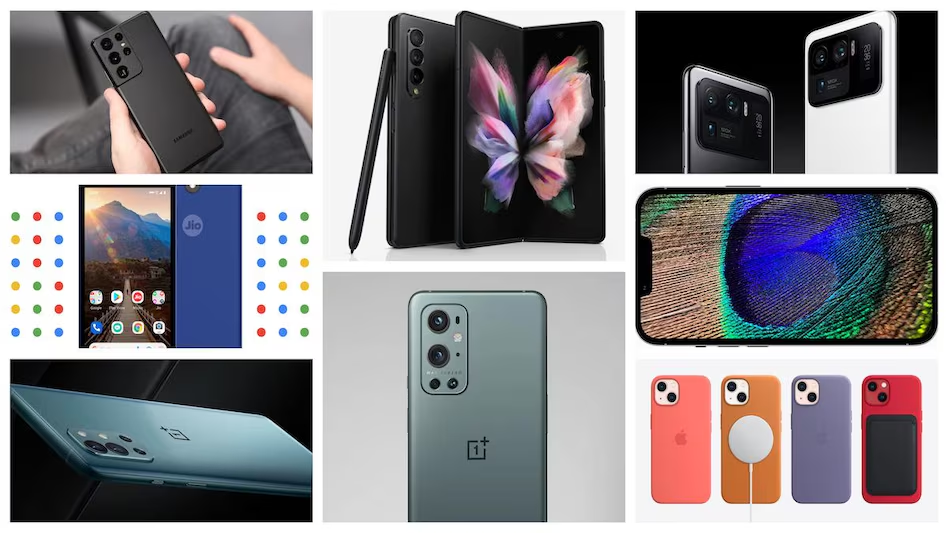

As we delve into the world of cutting-edge smartphones, it’s essential to consider all aspects that make a device stand out in today’s competitive market. Let’s explore this topic in more detail with Papa’s Freezeria below, where we’ll examine the latest features, performance benchmarks, and user experiences that define the best smartphones of the year. From stunning camera capabilities to lightning-fast processors, we’ll compare the top contenders and help you make an informed decision on your next mobile companion.
The smartphone industry has undergone a remarkable transformation in recent years, with each new generation pushing the boundaries of what’s possible in mobile computing. Today’s devices are not just communication tools; they’re powerful computers that fit in our pockets, capable of handling complex tasks and delivering immersive experiences. The evolution of smartphone technology has been driven by advancements in several key areas, including processing power, display technology, camera systems, and connectivity.
One of the most significant developments has been the integration of artificial intelligence (AI) into smartphone operations. AI now powers everything from voice assistants to camera enhancements, making our devices smarter and more intuitive than ever before. The rise of 5G technology has also revolutionized the way we use our smartphones, offering unprecedented speeds and lower latency for seamless streaming, gaming, and real-time applications.
Another area of innovation has been in display technology. Manufacturers have been pushing for higher refresh rates, improved color accuracy, and better energy efficiency. OLED and AMOLED screens have become the standard for premium devices, offering deep blacks and vibrant colors that make content come alive. Foldable displays have also entered the market, providing users with the flexibility of a tablet in a pocket-sized form factor.
Battery technology and charging speeds have seen significant improvements as well. Many smartphones now feature large capacity batteries that can last for days on a single charge, while fast charging technologies allow users to top up their devices in minutes rather than hours. Wireless charging has also become more prevalent, with some manufacturers even experimenting with reverse wireless charging capabilities.
Read more: 5G vs 6G: What’s Next in Wireless Technology?
The smartphone market is fiercely competitive, with several manufacturers vying for the top spot. Each brand brings its unique strengths to the table, whether it’s cutting-edge hardware, innovative software features, or a combination of both. Let’s take a closer look at some of the leading contenders in this year’s smartphone race.
Apple’s flagship device continues to set the standard for iOS enthusiasts. The iPhone 13 Pro Max boasts a stunning 6.7-inch Super Retina XDR display with ProMotion technology, offering a 120Hz refresh rate for buttery-smooth scrolling and responsiveness. Under the hood, the A15 Bionic chip delivers exceptional performance for both everyday tasks and demanding applications.
The camera system on the iPhone 13 Pro Max is a standout feature, with three 12-megapixel lenses (wide, ultra-wide, and telephoto) that work in harmony to produce stunning photos and videos. The addition of Cinematic mode brings a new level of creativity to mobile videography, allowing users to create professional-looking footage with automatic focus transitions and depth effects.
iOS 15 introduces several new features that enhance the user experience, including Focus modes for better productivity, Live Text for interacting with text in images, and enhanced privacy controls. With 5G capabilities and improved battery life, the iPhone 13 Pro Max is a compelling option for those deeply invested in the Apple ecosystem.
Samsung’s Galaxy S21 Ultra represents the pinnacle of Android smartphone technology. It features a massive 6.8-inch Dynamic AMOLED 2X display with a variable refresh rate of up to 120Hz, providing an immersive viewing experience for all types of content. The Exynos 2100 (or Snapdragon 888, depending on the region) processor ensures smooth performance across all applications.
The camera system is where the S21 Ultra truly shines, with a versatile quad-camera setup that includes a 108-megapixel main sensor, two 10-megapixel telephoto lenses (3x and 10x optical zoom), and a 12-megapixel ultra-wide lens. This configuration allows for incredible zoom capabilities and excellent low-light performance.
Samsung’s One UI 3.1, built on top of Android 11, offers a refined user experience with features like improved privacy controls, enhanced multitasking capabilities, and seamless integration with other Samsung devices. The S Pen support, previously exclusive to the Note series, adds another layer of functionality for power users.
Google’s Pixel 6 Pro marks a significant leap forward for the company’s smartphone lineup. Powered by Google’s custom-designed Tensor chip, this device puts AI and machine learning at the forefront of the user experience. The 6.7-inch LTPO OLED display offers a 120Hz refresh rate and vibrant colors, making it ideal for multimedia consumption.
The camera system on the Pixel 6 Pro consists of a 50-megapixel main sensor, a 12-megapixel ultra-wide lens, and a 48-megapixel telephoto lens with 4x optical zoom. Google’s computational photography algorithms work in tandem with this hardware to produce consistently excellent photos in various lighting conditions.
Running on Android 12 with Google’s Material You design language, the Pixel 6 Pro offers a highly customizable and visually appealing interface. Features like Magic Eraser for removing unwanted objects from photos and Live Translate for real-time language translation showcase the power of Google’s AI capabilities.
Read more: How Blockchain Is Revolutionizing More Than Just Crypto
When it comes to choosing the best smartphone, several key factors come into play. Let’s break down the most important aspects and see how our top contenders stack up against each other.
All three devices offer exceptional display quality, with high refresh rates and vibrant colors. The iPhone 13 Pro Max and Galaxy S21 Ultra edge out slightly with their variable refresh rate technology, which can adjust dynamically to conserve battery life. The S21 Ultra’s slightly larger screen may appeal to those who prioritize screen real estate, while the iPhone’s ProMotion display offers unparalleled smoothness in UI animations.
The Pixel 6 Pro’s display, while excellent, doesn’t quite reach the peak brightness levels of its competitors. However, its color accuracy and viewing angles are top-notch, making it a strong contender for those who value a natural-looking display.
Camera performance is often a deciding factor for many smartphone buyers, and each of these devices brings something unique to the table. The iPhone 13 Pro Max excels in video recording, with its Cinematic mode offering a level of control previously reserved for professional cameras. Its night mode performance is also exemplary, producing clear and detailed low-light shots.
The Galaxy S21 Ultra’s versatility is unmatched, thanks to its impressive zoom capabilities and wide range of shooting modes. The 108-megapixel main sensor captures an incredible amount of detail, although some users may find the colors slightly oversaturated compared to real life.
The Pixel 6 Pro, while having fewer megapixels than its rivals, leverages Google’s computational photography to produce consistently excellent photos across various scenarios. Its night sight mode is particularly impressive, often outperforming the competition in extremely low-light conditions.
In terms of raw performance, all three devices are more than capable of handling any task you throw at them. The iPhone 13 Pro Max’s A15 Bionic chip leads the pack in benchmarks, but in real-world usage, the difference is negligible for most users. The Exynos 2100 (or Snapdragon 888) in the S21 Ultra and the Tensor chip in the Pixel 6 Pro both offer smooth performance for everyday tasks and demanding games alike.
Battery life is another crucial factor, and all three devices perform admirably in this regard. The iPhone 13 Pro Max takes the lead with its excellent power efficiency, often lasting well into a second day of use for many users.